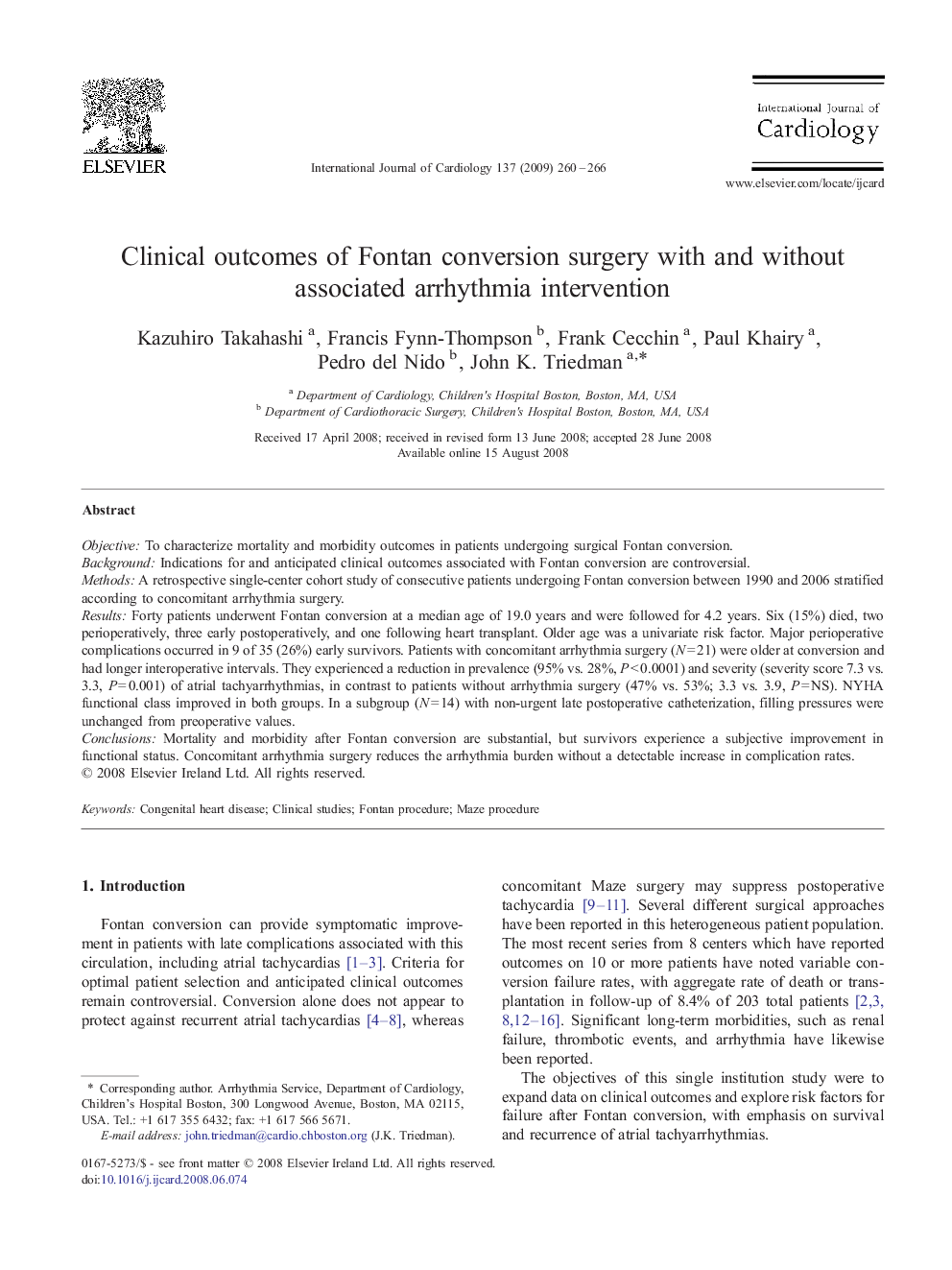| Article ID | Journal | Published Year | Pages | File Type |
|---|---|---|---|---|
| 2931918 | International Journal of Cardiology | 2009 | 7 Pages |
ObjectiveTo characterize mortality and morbidity outcomes in patients undergoing surgical Fontan conversion.BackgroundIndications for and anticipated clinical outcomes associated with Fontan conversion are controversial.MethodsA retrospective single-center cohort study of consecutive patients undergoing Fontan conversion between 1990 and 2006 stratified according to concomitant arrhythmia surgery.ResultsForty patients underwent Fontan conversion at a median age of 19.0 years and were followed for 4.2 years. Six (15%) died, two perioperatively, three early postoperatively, and one following heart transplant. Older age was a univariate risk factor. Major perioperative complications occurred in 9 of 35 (26%) early survivors. Patients with concomitant arrhythmia surgery (N = 21) were older at conversion and had longer interoperative intervals. They experienced a reduction in prevalence (95% vs. 28%, P < 0.0001) and severity (severity score 7.3 vs. 3.3, P = 0.001) of atrial tachyarrhythmias, in contrast to patients without arrhythmia surgery (47% vs. 53%; 3.3 vs. 3.9, P = NS). NYHA functional class improved in both groups. In a subgroup (N = 14) with non-urgent late postoperative catheterization, filling pressures were unchanged from preoperative values.ConclusionsMortality and morbidity after Fontan conversion are substantial, but survivors experience a subjective improvement in functional status. Concomitant arrhythmia surgery reduces the arrhythmia burden without a detectable increase in complication rates.
